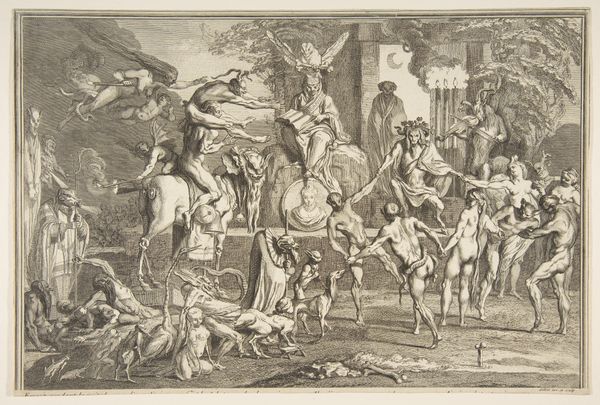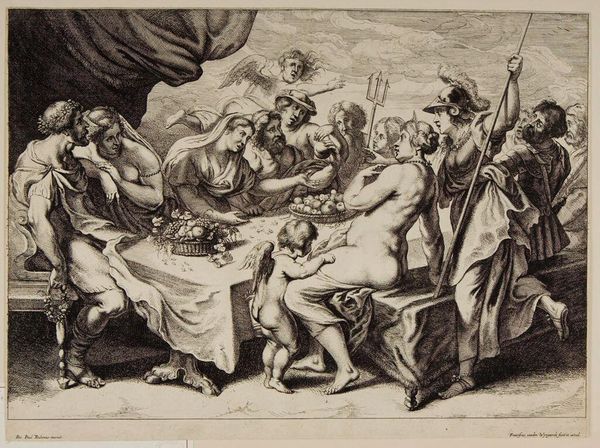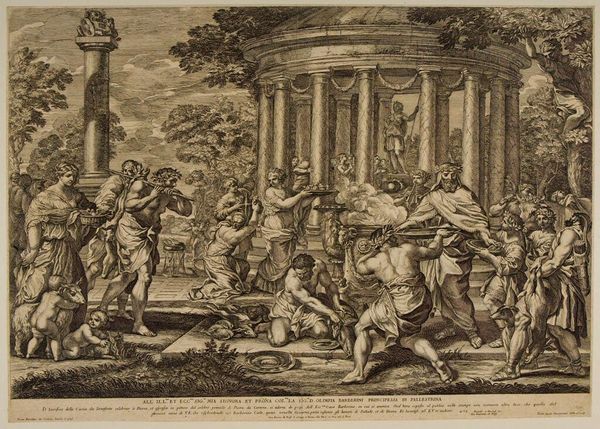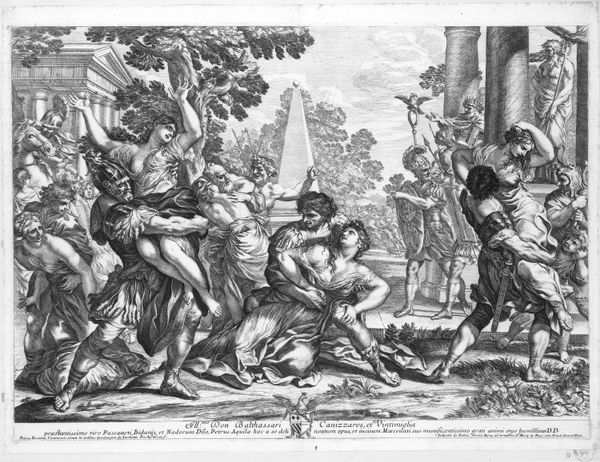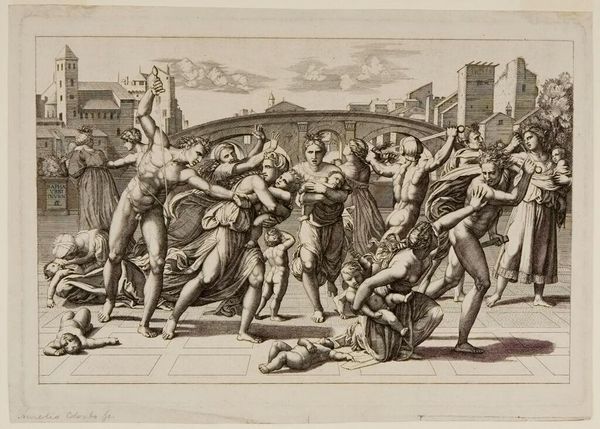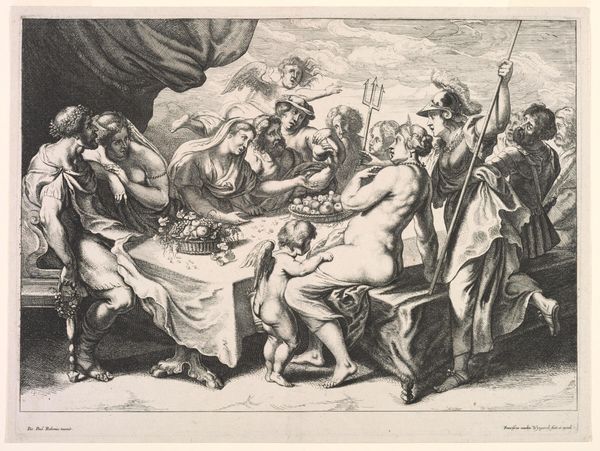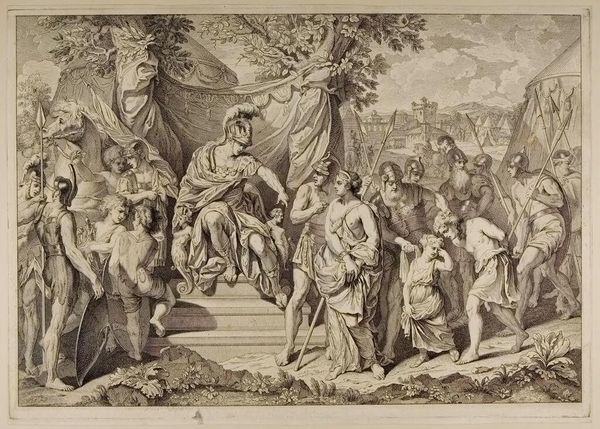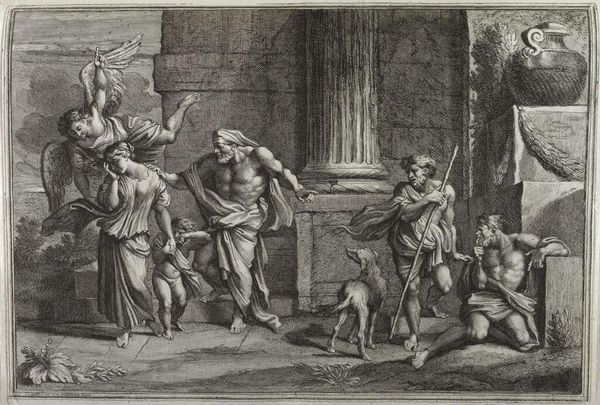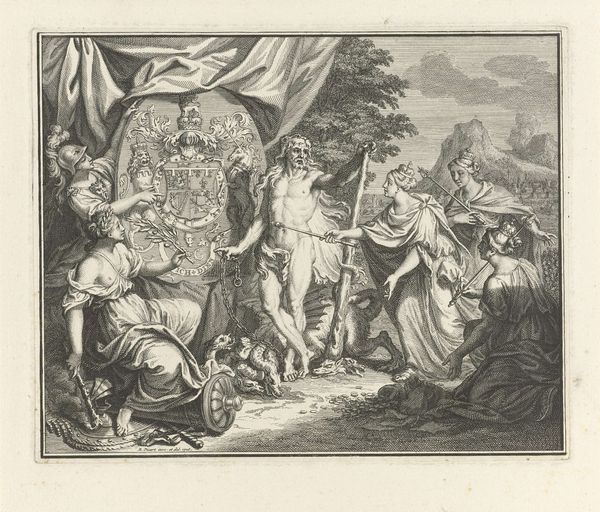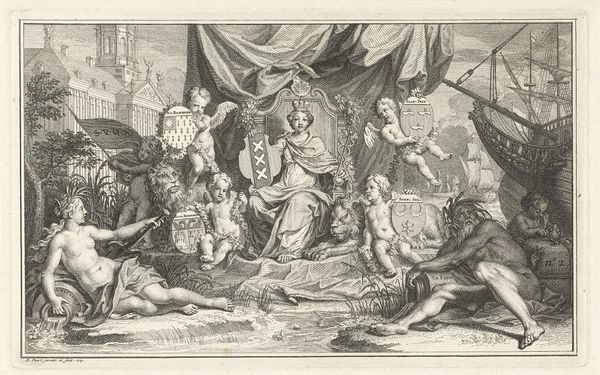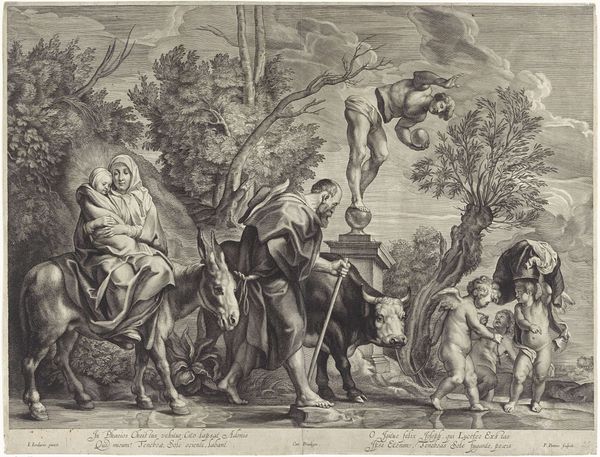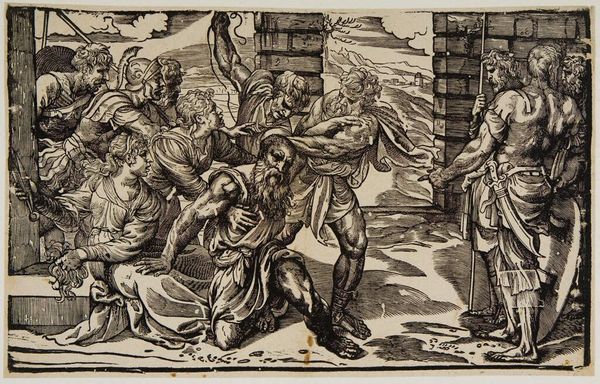
Copyright: CC0 1.0
Editor: This is Pietro Aquila's "Rape of the Sabines," created around 1650-1700. It's quite a chaotic scene, all in monochrome. What do you see in this piece in terms of its historical symbolism? Curator: Notice how Aquila depicts the Roman soldiers. What symbols do you observe that might suggest something about Roman identity and their aspirations to power? The eagle standard, for example? Editor: I see the eagle, yes. It seems to represent Roman authority and dominance. Curator: Exactly! The "Rape of the Sabines" isn't merely about abduction. It speaks to the cultural memory of Rome's foundational narrative, of power asserted and a people created through assimilation, however violent. Editor: So, the image carries this complex mix of power, violence, and the creation of a new culture. Curator: Precisely. It's a potent reminder that images can hold layers of cultural meaning that shift over time.
Comments
No comments
Be the first to comment and join the conversation on the ultimate creative platform.
